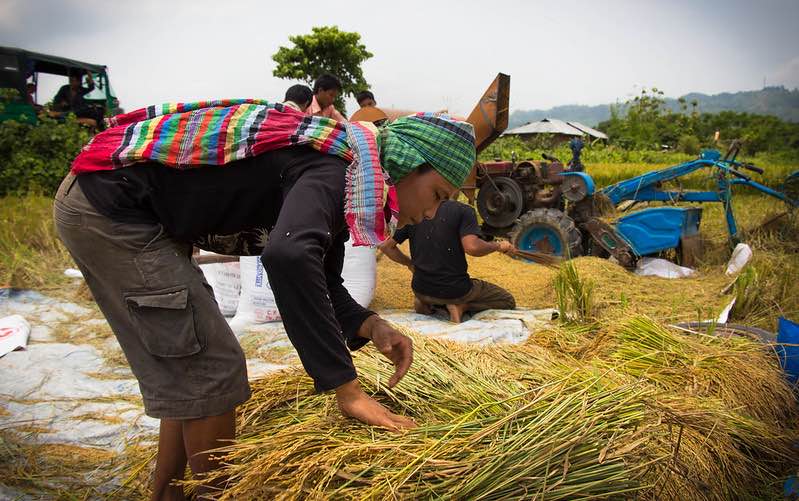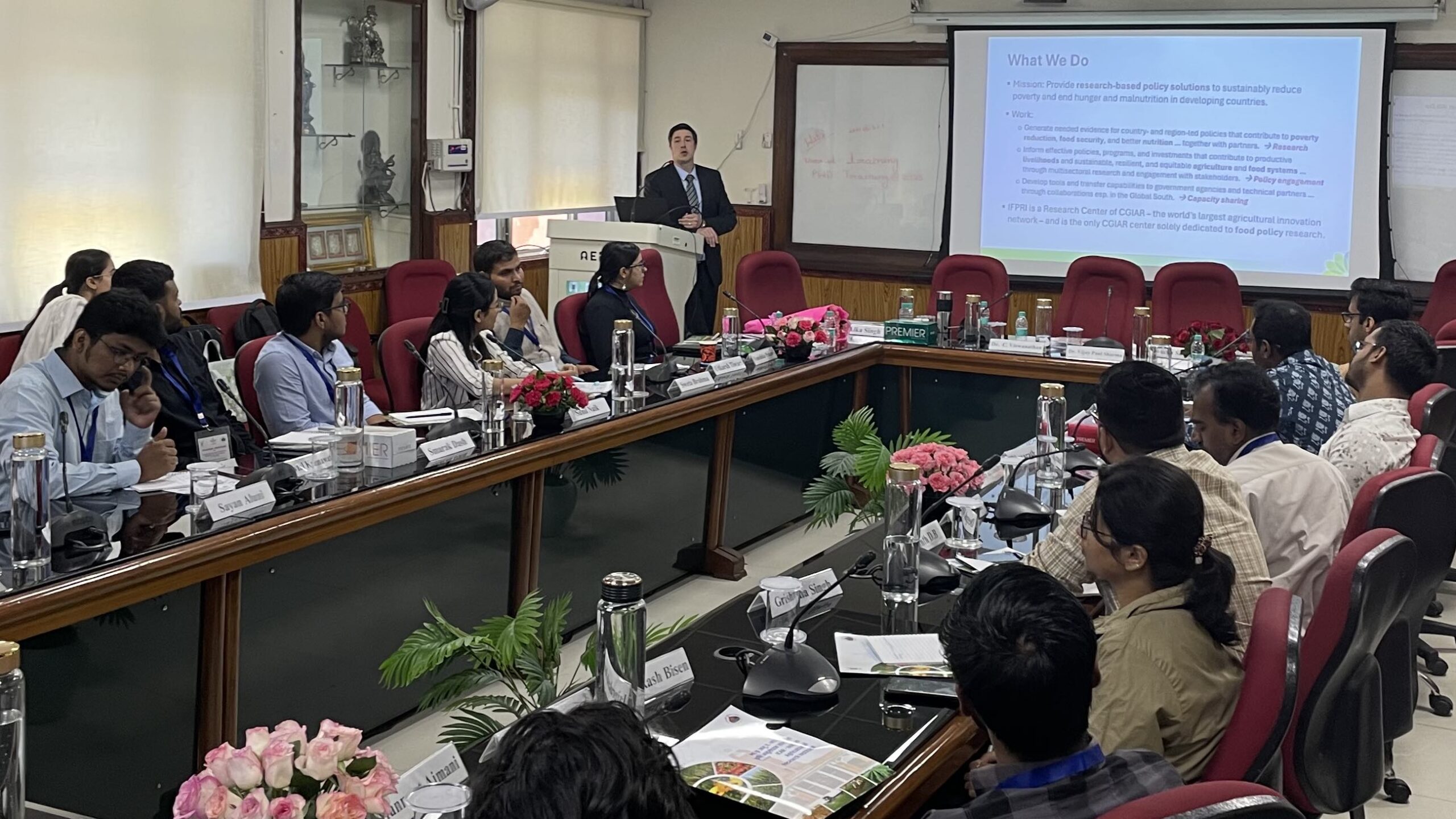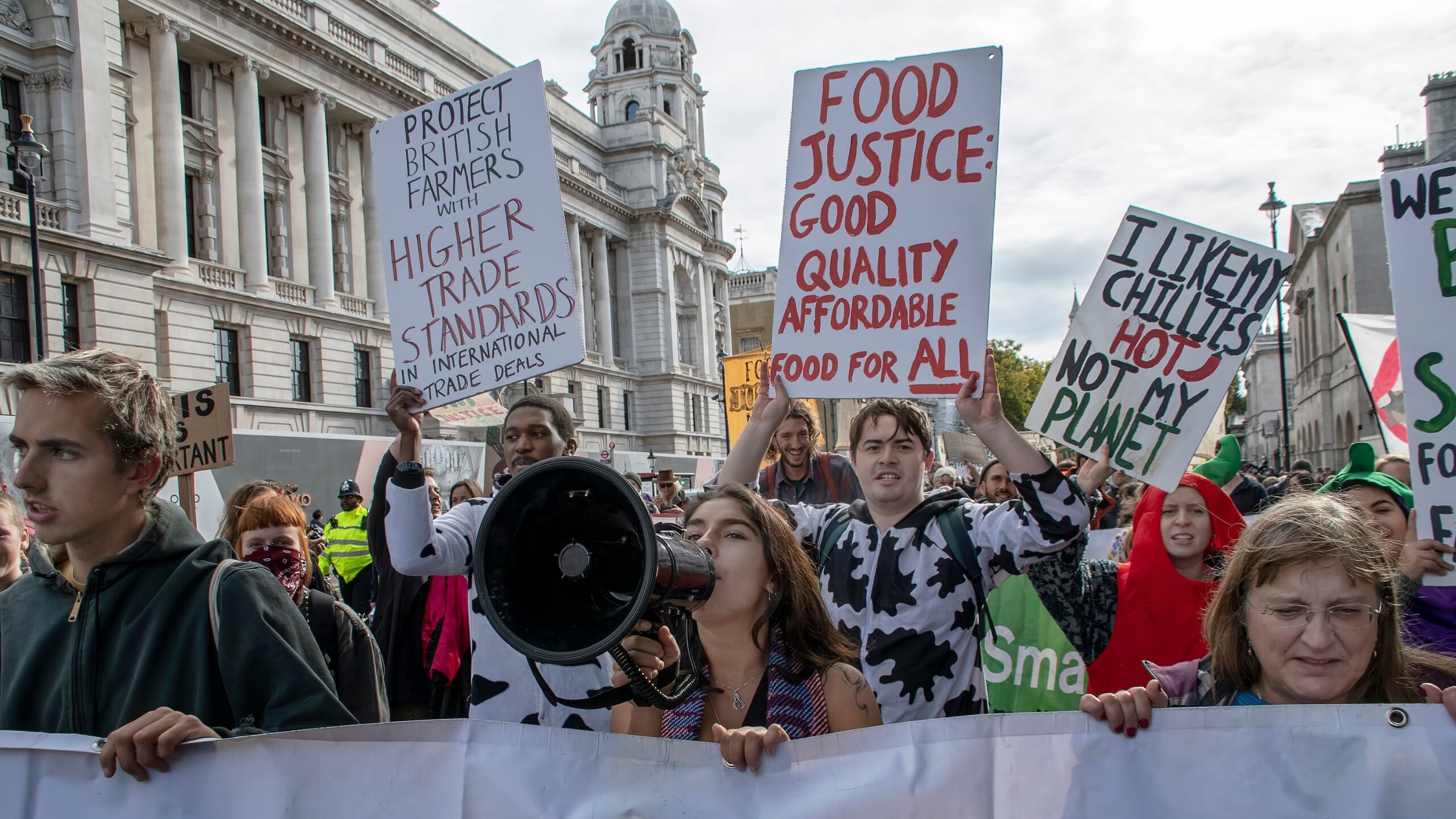Translation option:
As the Russia-Ukraine crisis continues to disrupt the global trade of key foods such as wheat and vegetable oils, along with fertilizers, impacts are falling heavily on countries such as Bangladesh. Dependent on imports of those items to feed its large population, many poor and vulnerable to shocks, the country faces the prospect of rising food insecurity.
The conflict threatens Bangladesh’s recent progress on this front. With a population of 165 million in 2021—with 38% employed by the agricultural and fisheries sector—and a growing economy, the country’s undernourished population declined from a high of 16% in 2000 to as low as 9.7% in 2019. While the COVID-19 pandemic increased food insecurity, by some measures the country proved relatively resilient: According to a IFPRI study, the proportion of rural households facing moderate or severe food insecurity rose from 15% in early 2020 to 45% in Jan. 2021, then returned to pre-pandemic levels by the end of 2021.
Now that 2021 recovery is in danger: Bangladesh saw a record rise in prices of staples in March 2022, along with volatility in the fertilizer market. In this post we discuss Bangladesh’s trade exposure to several commodities facing export restrictions, the fiscal impact of rising imports, and potential measures for easing food security pressures.
Risks for the Bangladesh food system
The war in Ukraine has affected Bangladesh in three significant ways.
First, the wheat market. Although Bangladesh has a historically high reliance on rice in its caloric intake (about 68% of total calories), wheat has been an increasingly important food source—about 7% of total calories. Wheat consumption has tripled since 2000, and Bangladesh imports more than 80% of its wheat needs. Since 2005, Russia and Ukraine have accounted for an increasing share of those imports, reaching more than half of the total (Figure 1). With those sources now disrupted, Bangladesh will have to find alternatives. In previous years, Bangladesh has purchased wheat from India and Australia, among other suppliers. India is expecting a good harvest and has indicated it may be able to supply as much as 10 million metric tons (MT) to world markets this year.
Figure 1
Second, the vegetable oil market. Ukraine and Russia account for about 75% of world sunflower oil exports. While Bangladesh does not import sunflower oil, the war has increased prices across the entire vegetable oil complex. Bangladesh imports almost all of its vegetable oil needs either in the form of raw or processed products (primarily palm oil and soybean oil) or imported oilseeds (rapeseed and soybeans), processed domestically.
Trade restrictions imposed by major vegetable oil exporters have also increased Bangladesh’s vulnerability. Indonesia supplies 80% of Bangladesh's palm oil imports. This March, Indonesia implemented a progressive export levy for palm oil and its derivates that may limit total supply in the global market. Argentina, meanwhile accounts for about two thirds of Bangladesh's soybean imports. On March 13, Argentina restricted exports of soybean oil and meal, then altered course on March 31, permitting exports but raising export taxes on those products from 31% to 33%. All of these factors have kept vegetable oil prices at record levels and increased import costs for countries like Bangladesh. Considering the effects on both grains and oilseeds markets, our export restriction tracking data indicates that 38% of Bangladesh’s total imported calories is likely to be impacted by such measures, equivalent to a quarter of the dollar value of total imports.
Third, fertilizer costs. Bangladesh agriculture, particularly rice production, relies heavily on the use of fertilizers. Average application rates are over 286 kg/hectare and Bangladesh imports over 1.2 million tons of fertilizer annually, including 31% of nitrogen needs, 57% of phosphate needs and 95% of potash needs. Russia and Belarus are major global fertilizer exporters, and the war, including export sanctions aimed at Russia, has disrupted these markets as well. Bangladesh imports almost 75% of its potash needs from Russia (34%) and Belarus (41%). Bangladesh will likely have to source these ingredients from other countries and pay higher prices. Resulting lower input use—particularly of nitrogen-based fertilizers—could reduce rice production, increasing demand on rice imports.
In addition, Bangladesh imports 44% of its corn and soybean supplies (computation based on FAOSTAT food balance sheet), and these too are seeing rising global prices. This impacts the feed sector in Bangladesh, increasing the production costs of poultry, cattle, and fish products—sectors already weakened by the pandemic. Reducing the availability of animal products in the coming months could compound the food security impacts from disruptions in the key staple products of wheat, vegetable oils, and rice.
To maintain supplies, Bangladesh will have to buy commodities at higher prices; this will put pressure on monetary reserves and impact the currency market; there have been signs of currency depreciation already. This in turn would lead to an additional price increase for consumers, as high world market prices are amplified by a weaker exchange rate, and more pressure on public finance, trapped between servicing the country’s foreign debt (already $460 per capita in 2021), and the increased cost of domestic programs.
Macroeconomic consequences and direct impact on government policies
As in many countries, domestic food prices are already rising. Though the official estimates of price inflation, 5.5% for food in December 2021, depict a relatively mild situation, a report by the Centre for Policy Dialogue (CPD) indicates higher prices for essentials (with rice thus far remaining relatively stable).
In the first seven months of the current fiscal year (the fiscal year begins in July), the trade deficit has increased by over 82% to $18.7 billion, as the import bill surged by 46% over the same period in FY21, and despite high export growth. Costs include $5.79 billion on rice, wheat, fertilizer and vegetable imports. According to the U.S. Department of Agriculture, Bangladesh is expected to import 7.5 million MT of wheat and 2.3 million MT of corn in 2022-23.
Figure 2
How can Bangladesh cushion impacts of rising prices and supply problems on the poor and on farmers? The government runs extensive public food distribution programs (PFDS) including Open Market Sale (OMS), Food Friendly Program (FFP), and the Vulnerable Group Feeding (VGF). The FFP program alone provides food, mainly grains, to over 5 million poor families with an annual cost of $380 million. During the first year of the pandemic, public food distribution rose to 2.8 million MT from the pre-pandemic level of 2.6 million MT (2018-19). In the current fiscal year the country has already distributed 1.5 million tons against a target of 3.3 million MT of food grains.
Figure 3
The greater volume of the distribution comes as income losses and high unemployment due to COVID-19 in the recent months have pushed many families into poverty, leading the government to expand food distribution programs, particularly through OMS. The decision in March to provide another 10 million families with soybean oil, sugar, chickpeas and lentils at subsidized prices is a clear indication of the country’s growing food insecurity problem.
Meanwhile, government subsidies for fertilizers are expected to hit a record high $3.2 billion in 2021-22, tripling the initial allocation of $1 billion. Farmers receive subsidies that account for 70% to 85% of market prices of various types of fertilizers. With a total demand of 5.8 million MT of fertilizers, and market disruptions proliferating, farmers now face huge uncertainties in getting fertilizers on time. Fertilizer shortages would have significant impacts in the planting of Aus rice season this spring, Aman in July, and Boro season rice later this fall.
Policy recommendations
Food security for the poor is at the core of the government’s policy agenda. Though the country’s production forecast for rice (36.3 million MT in 2022-23, according to USDA) gives some level of comfort, it still needs to procure 0.7 million tons of rice from abroad. International wheat and maize supplies are uncertain, as are those of fertilizers. How can Bangladesh cope with the current price and supply volatility in these items and maintain food security?
In order to keep the inflationary pressure under control, the government should monitor price trends in both domestic and international markets and take timely measures to maintain sufficient food supplies.
Research by Chowdhury et al shows that there were leakages in the FFP distributions during the early phases of the pandemic, due to mis-targeting recipients and in appropriations of the quantity disbursed, among other issues. Since the government has now decided to increase the number of people receiving food, it is crucial that the selection of beneficiaries is done properly, preferably by automating the process. Routine monitoring and effective evaluation of such programs can also help alert the government about supply disruptions and inefficiencies. Similar approaches should be used for fertilizer programs to improve their efficiencies.
To help stabilize markets, some short-term initiatives would be helpful. The government should continue to provide assistance to consumers through OMS and other mechanisms. In this regard, we find it encouraging that the government has already reduced import tariffs and the value added tax (VAT), to keep prices low. To address structural weaknesses, longer-term reforms will be required—in particular, a reform of fertilizer subsidies, as such policies are not sustainable from an environmental and fiscal point of view.
Conclusion
As the ongoing Ukraine-Russia crisis threatens global food security, Bangladesh faces a predicament: paying rising prices for import commodities to maintain supplies will squeeze currency reserves further and leave little room for the government to expand of social safety net programs.
Meanwhile, global market problems outside of food also threaten the country’s economy. The textile and garment sector could be affected, putting income and jobs at risk for many poor households. Indeed, input costs have been rising, both for synthetic and natural fibers (+72% increase in cotton prices over the last two years), while global demand has fallen during the pandemic, and the Russian market for Bangladesh exports now faces uncertainties in delivery of goods and receiving payments due to the war and international sanctions.
These concerns are already undermining the long-term recovery from the COVID-19 pandemic and will no doubt delay progress in achieving the SDGs by 2030. A coordinated approach by the government, with the support of international partners like the IMF to ensure proper financing, combining consumer subsidies, market intelligence, and quick evaluation of food and fertilizer distribution program performance is needed to effectively manage Bangladesh's food security needs.
Abdullah Mamun is a Senior Research Analyst with IFPRI's Markets, Trade, and Institutions Division (MTID); Joseph Glauber and David Laborde are MTID Senior Research Fellows. Opinions expressed are those of the authors.







